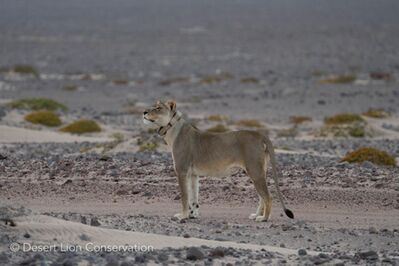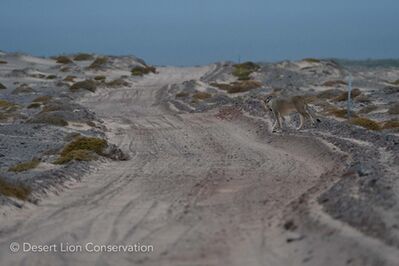Torra Bay Updates- 31 12 2022
Saturday 31 December 2022
Monitoring the movements of lioness Xpl-108 in the seasonal Torra Bay angling area
28 December 2022
Strong southwesterly winds persisted and by mid-afternoon it developed into a sandstorm with poor visibility. The lioness Xpl-108 did not visit the ocean but remained on the plains between the dunes and the main road. She only moved 2.9 kms during this period and hunted a small herd of springbok and an ostrich. When the wind speed increased into a sandstorm she found a thick patch of reeds and sedges where she remained hidden from the wind.
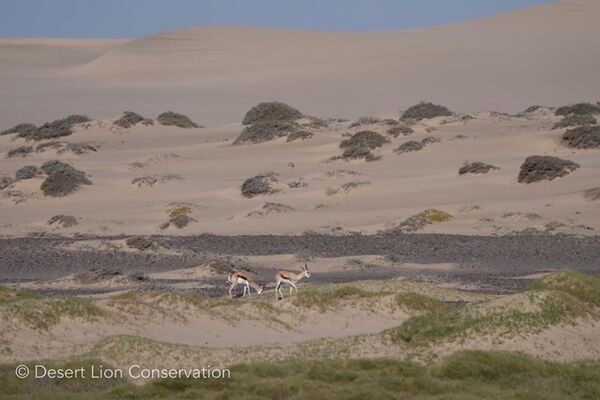
Small herd of springbok that the lioness attempted to hunt.
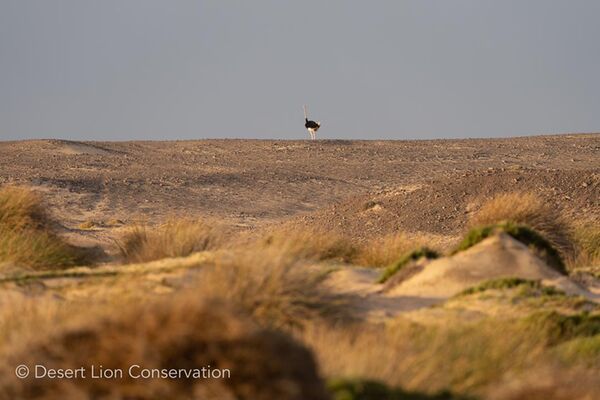
The thick clump of sedges where the lioness rested after attempting to hunt a male ostrich.
Dramatic cloud formations at sunset during a raging windstorm.
29-30 December 2022
Shortly after sunset, during the “Blue hour” of the day, the lioness headed straight for the ocean following the same track she did on 26 Dec 2022. On this occasion there were no vehicles or anglers in her path and she reached the coastline at the end of civil twilight. She moved southwards along the beach for 11 kms and managed to catch a small seal pup. Thereafter she turn inland to the dunes and ended at a spring next to the main road by 06h00, having walked 18.3 kms during the night.
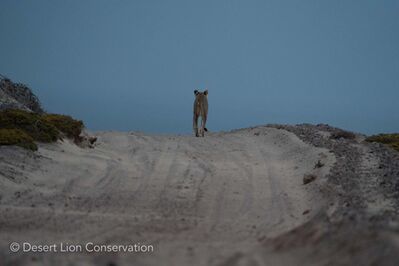
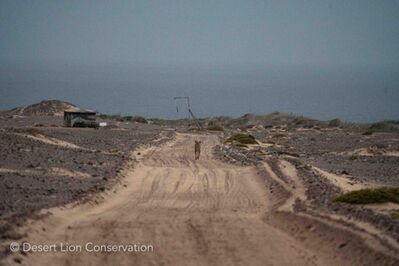
Lioness Xpl-108 start moving at dusk, following a service road, directly to the ocean at the mouth of the Uniab river.
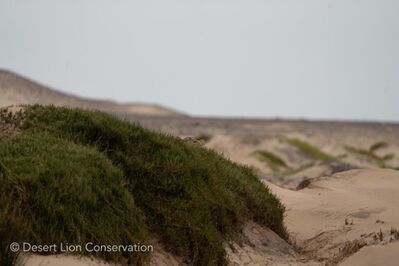
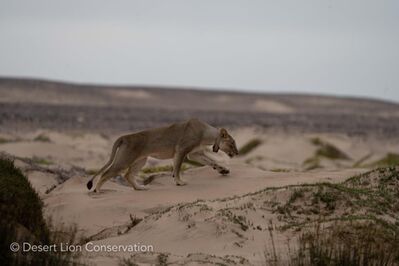
Lioness responds to tourists and people outside their vehicles.
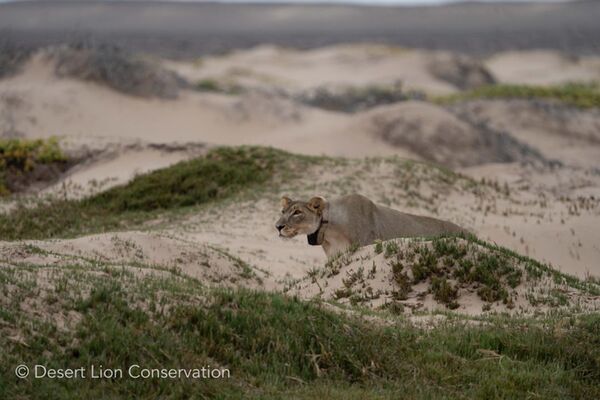
At 10h00 the lioness spotted a herd of gemsbok and began stalking them.
Numerous tourist and angling vehicles attempted to drive off the main road and approach the research vehicle and the lioness. Some people got out of the vehicles on the main road and these activities clearly disturbed the lioness as she slinked out of view and peaked at the people and vehicles from behind the hummocks (see photos.) At 10h00 a big herd of gemsbok approached the spring and the lioness began a spectacularly long and exhaustive hunt that lasted nearly 14 hours and stretched over a distance of 13.6 kms. On several occasions the gemsbok became aware of the lioness and moved away. She remained motionless, waited for the prey to move out of view, and continued to pursue them. By sunset, the herd of gemsbok reached the dunes and crossed over. Xpl-108 was not going give up that easily and continued following and stalking the gemsbok into the dune-belt. By estimation of her satellite collar movements and activity patterns, she finally gave up at midnight. She moved another 5.6 km to a rocky outcrop on the eastern edge of the dune-belt and rested there for the day on 30 Dec 2022.
She essentially did not rest during the day on the 29th as she continued pursuing the gemsbok. Since she left the thick sedges on the evening of 28 Dec the lioness was on the move for 36 hours and covered a total distance of 37.5 kms.
Gemsbok hunting
Skeleton Coast lioness hunt and pursue a herd of gemsbok for nearly 14 hours, through the heat of the day, and into the dune belt over a total distance of 13.6 kms. The extraordinary hunt of endurance and persistence did not succeed.

